Play Critically was provided with a review code for this videogame.
Godstrike is a bullet hell twin-stick shooter boss rush where time is my only resource. I play as Talaal, a person with the power to shoot a stream of magic orbs in any direction I point with the right joystick. My goal is to guide Talaal through ten different boss battles governed by strict time limits. Not only must I finish these challenges in time, every decision I make before and during these battles costs me time as well. Through careful decision making, efficient aim, and precision navigation of each boss’ bullet hell labyrinths, I can help Talaal emerge victorious against Godstrike’s ten ferocious bosses.
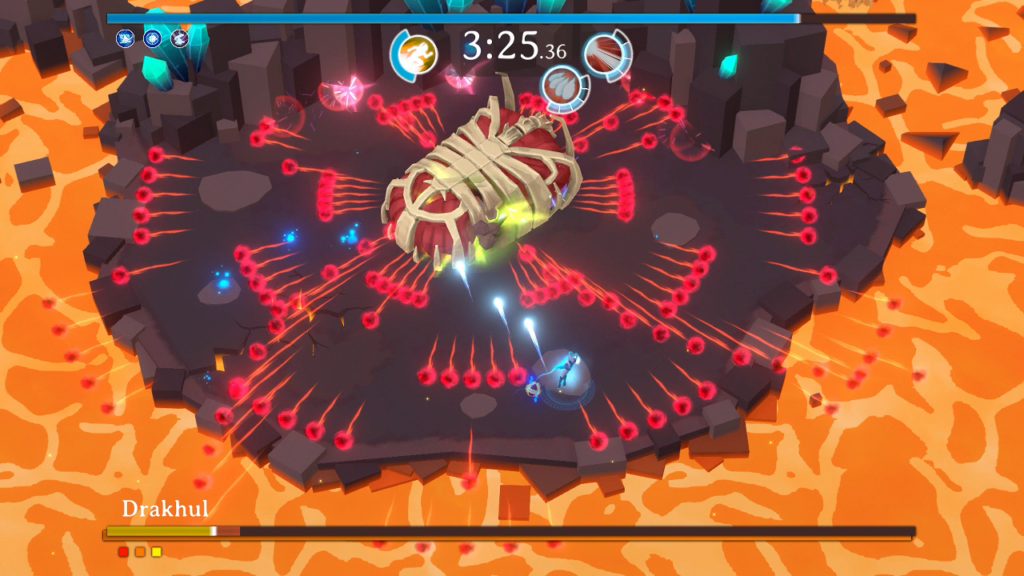
When I begin Godstrike’s Story Mode, I am treated to a typo-ridden animated slideshow explaining the world’s creation myth. It describes how the power of life left by the creation god was captured in seven masks. All but one of these masks were soon worn by mighty Heralds. These once-ordinary people were “tainted” by their newfound power and began to fight amongst themselves. One Herald defeated some of the others in battle while the rest fought in a far away land. The nearby tribes, fearing this Herald’s power, united and sealed it away in an ancient temple. For a time, things seemed well, until the sealed Herald corrupted the land, destroying the tribes that had imprisoned it. The corruption continued to spread, soon reaching a neighboring island. One adventurer leaves her tribe on this island and sets out onto the sea to discover a cure for the sickness.
The details of this story do not seem to be connected to the activities in Godstrike. I am left questioning every detail about the videogame’s design and the characters and events that design encapsulates.
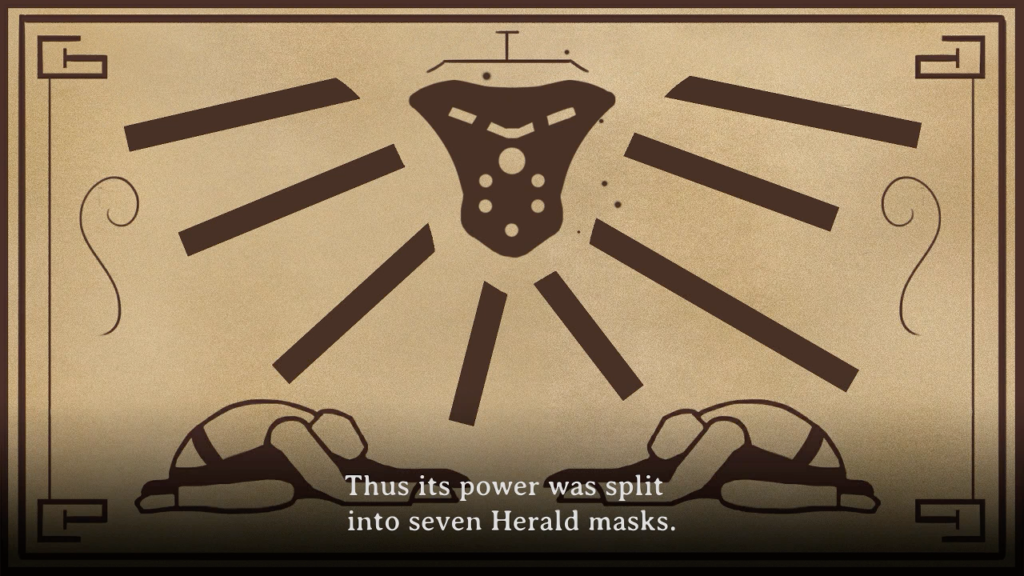
Is the young adventurer who leaves her island to find a cure to the Herald’s corruption the player character Talaal? Where are the other Heralds who continued to battle while the conquering Herald was imprisoned? What happened to the mask who never found a bearer? Is Talaal wearing the undiscovered mask? If so, where did they find it? Who or what are these nine bosses and where did they come from? Why does the prologue explicitly end with the protagonist sailing an uncharted world to find a cure, an activity I definitely do not experience? Why does a videogame whose mechanics are built around time not once mention time in its prologue?
A videogame’s story usually provides context for the activities I perform while playing it. Godstrike’s story is disconnected from the videogame it is attached to. It does not provide context, it confuses it, raising more questions than answers. It is best ignored.
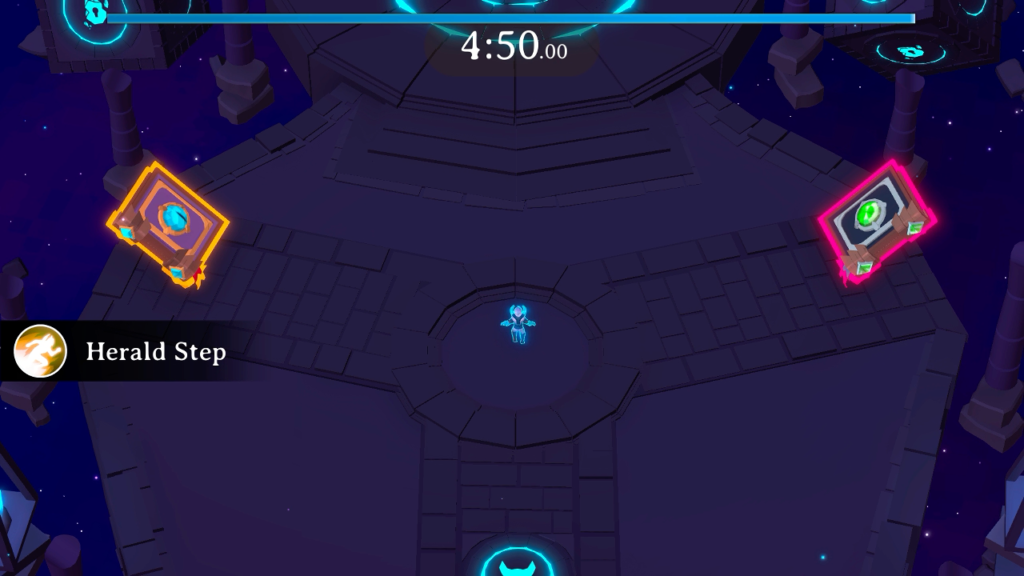
Once I am done being confounded by Godstrike’s prologue, Talaal appears on a shattered stone platform floating in a starry void. This area acts as a kind of lobby between boss encounters where I can prepare for the coming battle. It contains two massive books and a portal that leads to the boss’s arena.
The book on the right is the Occult Codex. It contains passive abilities I can equip to Talaal at no cost. These abilities are always active, but I am limited to four total. They range from Faster Than Light, which increases Talaal’s movement speed, to Trinity, which surrounds Talaal with three orbs that absorb one projectile each. By mixing and matching these abilities I can create a customized Talaal that focuses on movement, defense, or offense depending on the boss I am about to face.
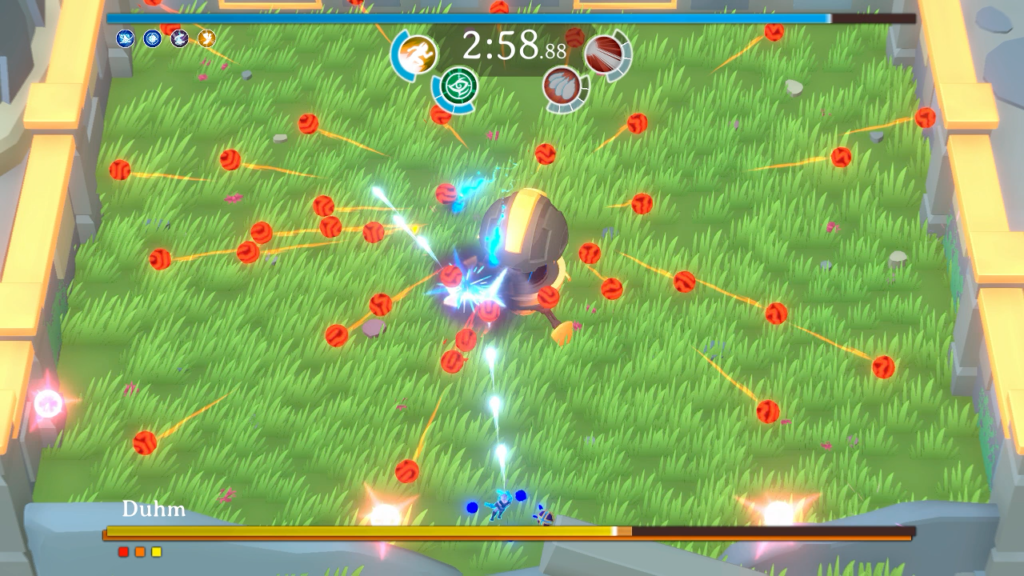
The book on the left is the Arcane Codex, and this is where time becomes a factor in Godstrike. Like the Occult Codex, the Arcane Codex lets me equip Talaal with up to four abilities. Unlike the Arcane Codex, these abilities can only be equipped with a cost: by reducing the total time allotted to defeat the boss. The more powerful an ability is, the more time will be subtracted from Talaal’s time total.
As I progress through the story I unlock skills like Herald Step, which lets me blink Talaal across the arena at the press of a button but subtracts fifteen seconds from the total time, to Cleanse, which clears all projectiles from the screen but subtracts thirty seconds from the total time, to Overload, which multiplies Talaal’s projectiles by four for a few seconds, but subtracts twenty-five seconds from the total time. Each skill also takes one to five souls to activate; souls drop from bosses when I strike them successively with Talaal’s attacks and skills.
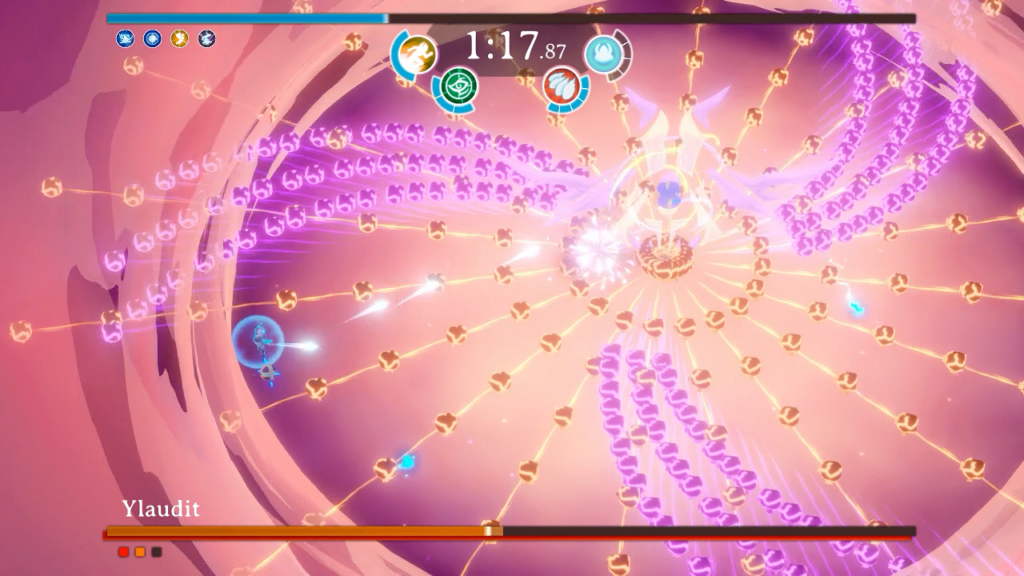
Whether I am choosing a defensive or offensive skill, I need to use it skillfully to justify the time it takes away from the total. If I can use Overload one or more times to deal more damage than I could in the twenty-five seconds the skill costs to equip, then I have justified that time lost from my total. If I equip Overload but never bother to use it in battle then I am simply wasting the time it costs to equip it.
Justifying time lost for defensive skills is a little more complicated and factors into how the time total also functions as Talaal’s life meter. Rather than having traditional hit points, whenever Talaal makes contact with a boss or one of its projectiles then fifteen seconds is reduced from their time total. For defensive abilities like Herald Step or Cleanse, I justify equipping that skill when I use them to avoid time losses I would otherwise have incurred by taking damage. When the time total reaches zero, it’s not an automatic game over, but the next hit Talaal takes will end the fight and I have to try again from the beginning.
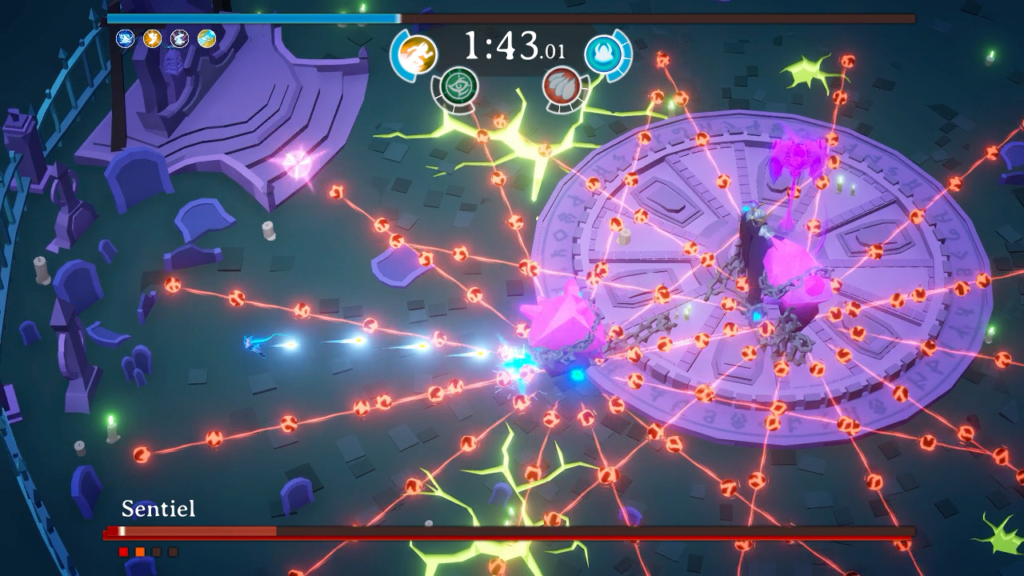
Godstrike’s usage of time as a resource for allocating skills, as a meter to track Talaal’s remaining health, and as a limiter before they succumb to their own raw power, is novel. It focuses less on finding the most efficient balance between which skills to equip and giving myself enough time to finish the boss and more on justifying equipping certain skills by using them skillfully in battle to make up for their cost.
There are no levels to traverse in Godstrike. There are no ancient corridors to explore teeming with chittering nasties to disintegrate with Talaal’s magic shots. It’s all about the bosses. Once I select my skills from the Codexes, I enter a portal and am thrust directly into the next boss fight.
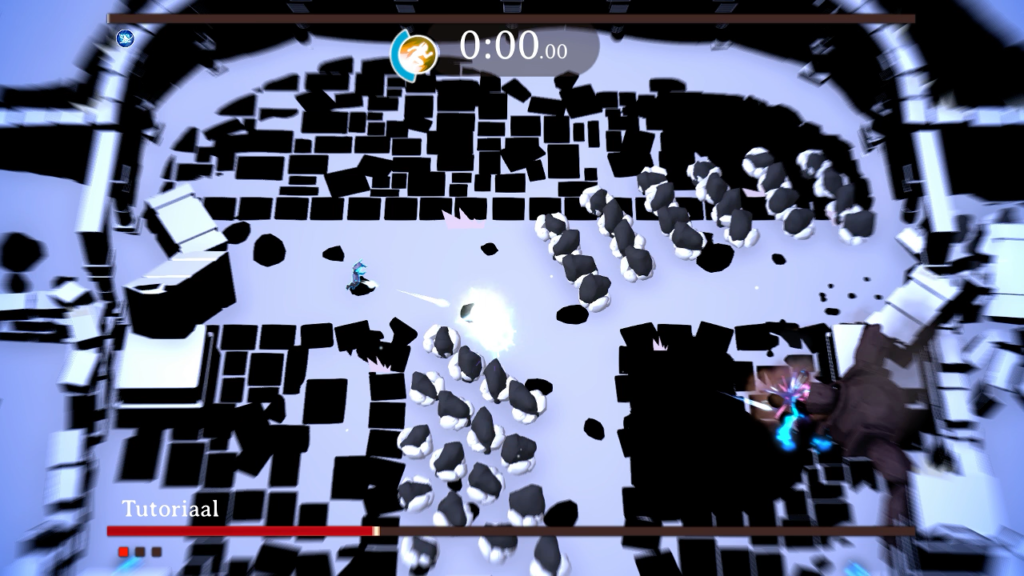
There’s a good deal of variety in these boss fights. The first battle is against Tutoriaal, a legless golem who attacks by slamming its fists into the ground. Sometimes these slams send a ring of rocks flying across the level, and I must weave Talaal through the gap that appears in this ring. At other times Tutoriaal’s slams send energy beams out to the arena’s corners like spokes on a wheel, and I must guide Talaal to stand perfectly still between the beams. The slightest misstep or hesitation will cost me precious total time.
As its name suggests, Tutoriaal is an effective tutorial for bullet hell mechanics. Sometimes I must weave through narrow openings in a moving wave of projectiles, and other times I must stand perfectly still in a safe spot to avoid projectiles. As I progress through the boss list and the difficulty rises I may be expected to mix up both strategies in projectile waves that can shift with a split-second’s notice.
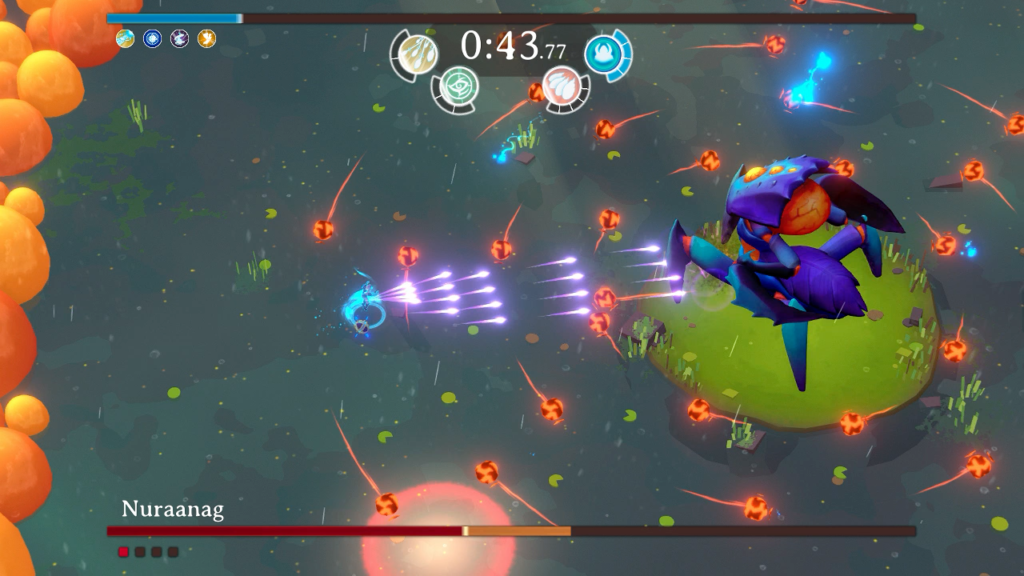
Each boss is divided into distinct phases whose lengths are communicated by multiple colored hit point meters at the screen’s bottom. A boss’ attack patterns and speed will shift to dangerous new levels when these new phases begin. Khalepo, a rotating totem pole, projects solid damage fields across the center of its circular arena which rotate around. I must push Talaal ahead of these fields while navigating through a minefield that constantly retracts and expands. Ylaudit begins as two distinct crystalline entities hovering in space who combine their powers and their bodies as I break down their hit point meters. I can never fully predict what will come at me in a boss’ next phase. I am guaranteed to die on my first attempt, and probably many more after. Only through dogged persistence will I learn and overcome each boss’ mechanics.
Some of the bosses are much harder than the others. This is to be expected, but many of the bosses felt more difficult not through intended rising dramatic tension but through the particular quirks of Godstrike’s design.
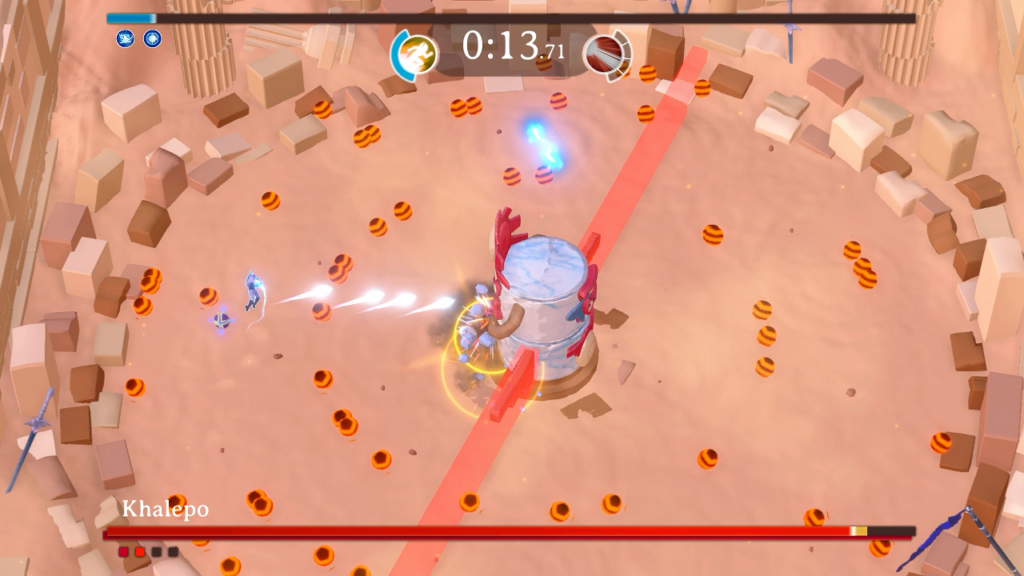
The boss that best represents one of the difficulties I experienced playing Godstrike is the second: Khalepo. While progressing through the Story Mode, I unlock one new active and passive skill with each boss I defeat, in addition to the ones I begin with. This means that when I face Khalepo I have only two active and passive skills total. With no real choices and limited ones at that, I am forced to defeat Khalepo essentially on skill alone. It feels like being railroaded, and indeed, when I revisit Khalepo later with the full suite of Talaal’s skills, it proves much easier to defeat.
A more specific difficulty I encountered across many bosses is a result of Godstrike’s perspective. The most famous and successful bullet hell videogames are shmups played from a top-down perspective. This gives a precise view of where the player character is located, making it much easier to dodge projectiles and return fire with pixel-perfect movement.
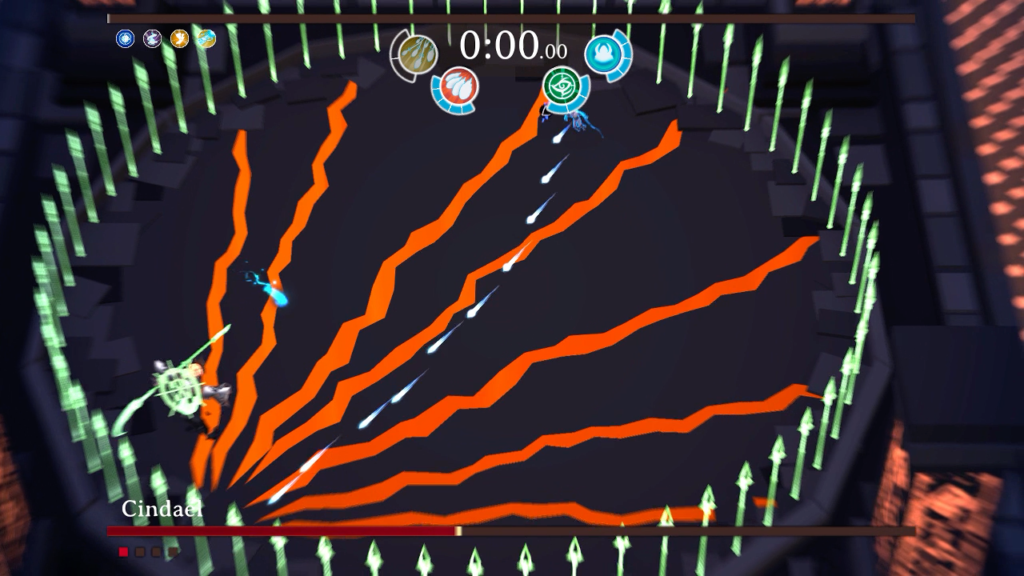
Instead of this time-tested perspective, Godstrike chooses a three-quarters perspective. The camera is fixed high and looks down on the action at an angle, to better show off the polygonal graphics and create more dynamic and exciting images. This looks good, but also makes it more difficult to gauge exactly where projectiles are located, especially when my frantic dodging brings me near the top of the arena, or worse, behind the boss.
The last difficulty I feel is a result of my choice to play Godstrike on a console. Twin-stick shooters are typically much easier to play on PC: Aiming is handled with the mouse while the player character is moved with the WASD keys. With a gamepad, I must move the player character with the left joystick while aiming with the right. Right joystick aiming often means I am firing in the general direction of the target instead of the precision aim a mouse cursor allows. Friendlier twin-stick shooters compensate for this lack of precision with sticky targeting, locking my attacks to an enemy if they are within the general area of my aim.
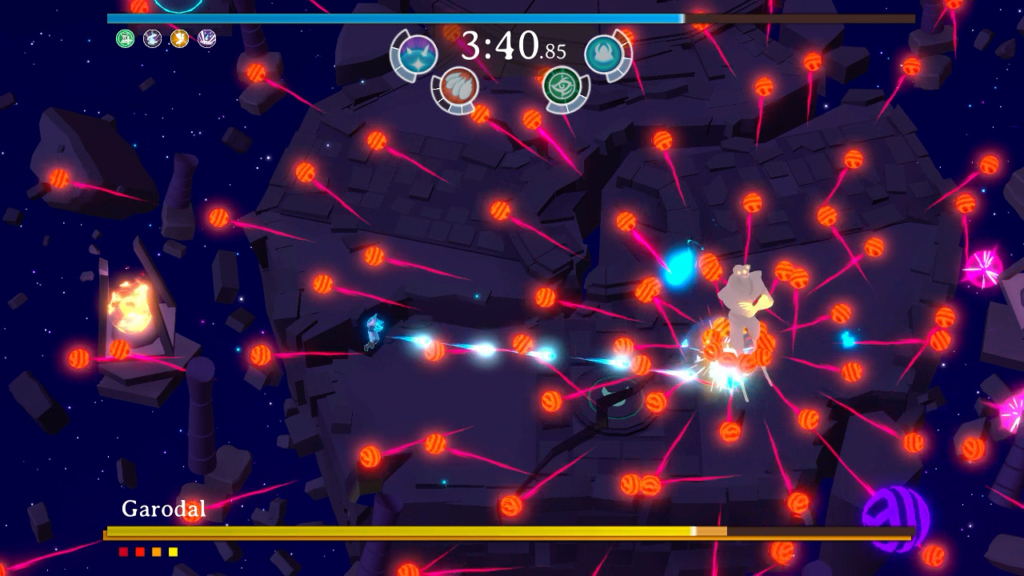
Godstrike offers no sticky targeting for gamepad play. As a result, I often find myself firing towards a boss and having my shots fly just above them instead. The gentle adjustment my aim needs is even more difficult to perform when I’m trying to dodge projectiles at the same time. This problem compounds itself with the perspective. This proved a particular problem on the final boss, where I intuitively tried to fire at its chest and head, while the three-quarters perspective made it so only firing at its knees was effective.
Through sheer stubbornness I can overcome the second and final bosses, but I can’t help but feel that some friendlier targeting options would have made that stubbornness less of a necessity.
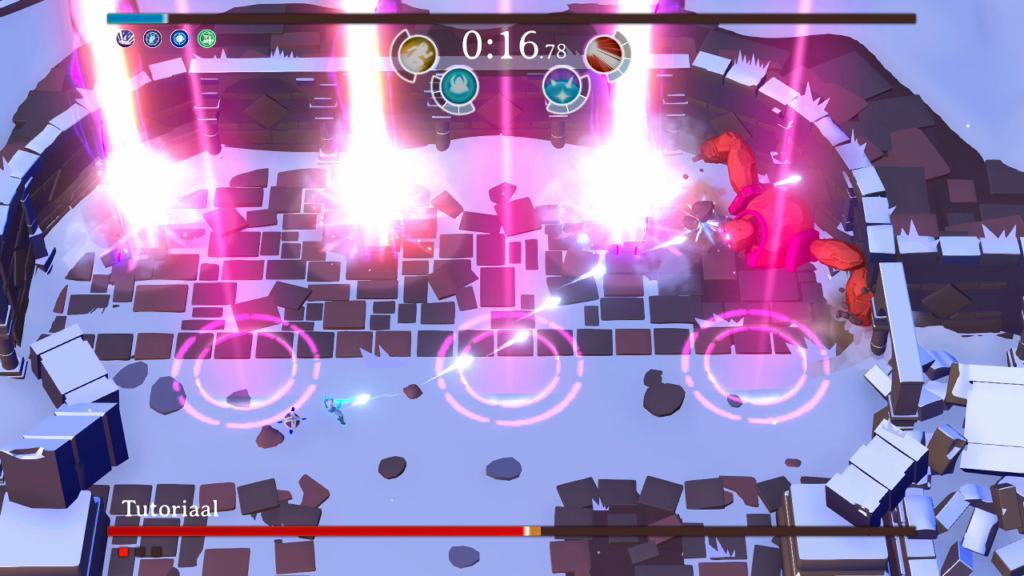
There’s more to Godstrike than its story mode. There’s the Arena Mode, where I can challenge any boss in any order I want and have Talaal’s complete toolkit available to me from the start. There are even more skills available in Arena Mode than in Story Mode, amounting to twice the choices in both the Arcane and Occult Codexes. There’s also the Challenge Mode, where I face a random boss with randomly unlocked abilities and see how far I can make it without dying. It feels like for bullet hell fans the real meat in Godstrike is found in these modes: the Arena Mode for creating absurd spectacles of power and broken builds, and the Challenge Mode for pure expressions of skill and determination.
Godstrike is an unfortunate mixture of cool concepts and uneven execution. Its story is its most vexing, having little to do with what’s actually happening once I am put in control of Talaal. It describes a world I never see and events I never impact. Since all of this exposition is confined to a single cutscene that precedes the Story Mode, it is easily ignored. Godstrike’s remainder is a competently executed bullet hell shooter. I experience some difficulty with the perspective and a lack of targeting support for gamepads, but I was able to overcome these issues with hours of persistence. It’s not the most approachable videogame out there, but its intertwining of time limits with taking damage and allocating skills is an interesting angle. Godstrike isn’t always fun, but overcoming its challenges feels rewarding.